Like mosquitos, ticks suck blood. Unlike mosquitos, ticks aren’t actually insects. Instead, they’re arachnids—like spiders, mites, and scorpions. These arachnids are no bigger than sesame seeds, until they consume a blood meal, that is. Fully engorged, ticks in Massachusetts can grow to the size of a grape. Luckily, only four types of ticks are commonly seen in Massachusetts, and only one of those ticks spreads Lyme disease. All ticks are vectors (carriers) of diseases, illnesses, bacteria, and pathogens, but that doesn’t mean that every single bite results in illness.
Unfortunately, many people don’t even realize they’ve been bitten by a tick. This is especially true for larval and nymph-aged ticks, which can be as small as the head of a pin. If you’re planning on doing any outdoor activities in Massachusetts this summer—hiking, backpacking, or just trail walking—then you should know about the ticks in Massachusetts, and how to keep them out of your skin.
Here, we’ll take a closer look at the four types of ticks in Massachusetts. Then, we’ll go over the most active times of year for ticks, and where their favorite hiding places are. Then, we’ll talk a little more about Lyme disease, and which type of tick carries it. Finally, we’ll discover a few easy things you can do to avoid tick bites.
Read on to learn more!
American Dog Tick

The American dog tick is a three host tick, meaning it takes one host as a larva, one host as a nymph, and one host as an adult.
©Doug Lemke/Shutterstock.com
American dog ticks (Dermacentor variabilis) are members of the hard-bodied tick family, Ixodidae. These ticks in Massachusetts are actually common along the entire eastern seaboard of the United States. They’re also found along the Pacific coast in the west, as far north as Alaska and Canada.
These ticks are commonly known as wood ticks. They have dark brown bodies with tan mottling, and are significantly larger than other types of ticks in Massachusetts. They prefer grasslands, where they lie in wait on blades of grass, holding out their front legs to latch onto any creature that happens by.
As their name suggests, American dog ticks prefer the blood of canines, but won’t say no to human blood either.
Lone Star Tick
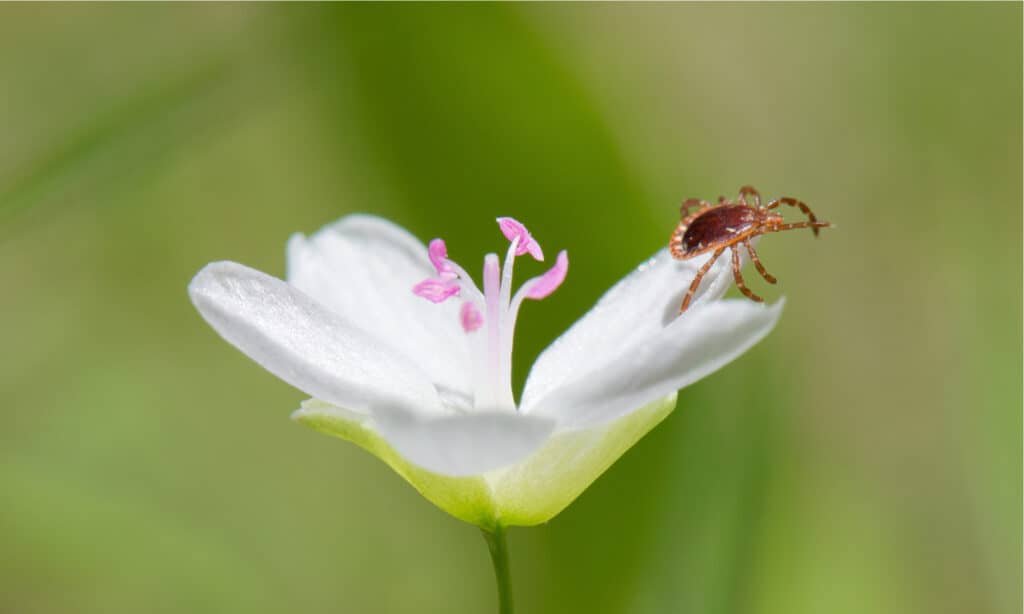
The lone star tick is also known as the cricket tick, turkey tick, or northeastern water tick.
©Shooty Photography/Shutterstock.com
Like the American dog tick, the lone star tick (Amblyomma americanum) is a hard-bodied tick. These ticks in Massachusetts have rounded bodies, and females have a lone, tan dot on their backs. This gives rise to their common name, though lone star ticks are also known as turkey ticks, or cricket ticks. Lone star ticks are extremely common throughout the eastern United States and Mexico, where they feed primarily on white-tailed deer.
Lone star ticks are known to be aggressive feeders who will even track warm-blooded prey by their carbon dioxide trail. Their mouthparts are longer than most other ticks, leading to deep bites that can easily become infected. Lone star ticks prefer deer, but will also feed on dogs, cats, raccoons, mice, rats, humans, or other animals.
Deer Tick
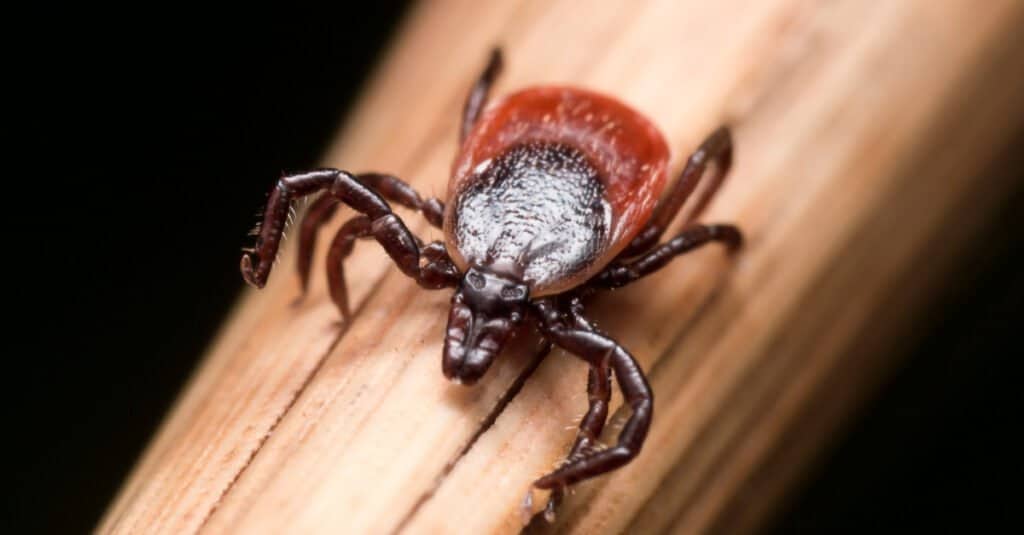
The deer tick is common all over North America. They’re alternately known as black-legged ticks, for their dark legs.
©Steven Ellingson/Shutterstock.com
Yet another hard-bodied tick, the deer tick (Ixodes scapularis) inhabits the midwestern and eastern United States and Canada. Female deer ticks have red-brown bodies with black legs, while males have dark bodies and black legs. Since they’re the only tick in Massachusetts with black legs, they’ve come to be known as the black-legged tick.
Adult deer ticks prefer the blood of white-tailed deer, but bites to humans are not uncommon. Unfed deer ticks are very small, so bites are easy to overlook. But, when fully engorged, their bodies can swell up to six times their normal size. Deer ticks spend most of their time in second-growth forests and the edge zones between forest and grassland.
Brown Dog Tick
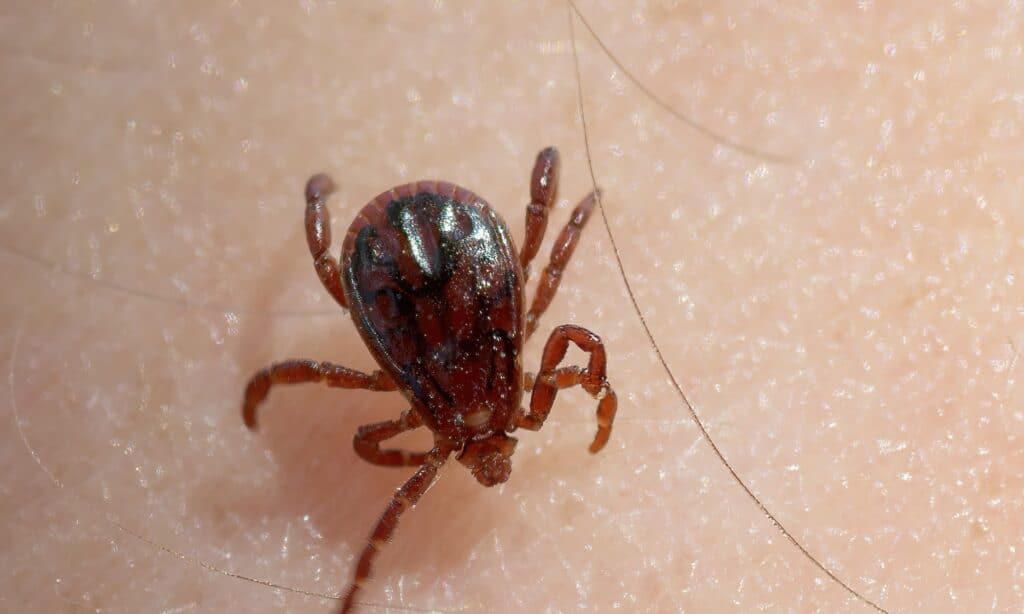
The
brown dog tick
lives on every continent except Antarctica.
©iStock.com/RobertAx
Common everywhere dogs live, the brown dog tick (Rhipicephalus sanguineus) is the only tick in Massachusetts that lives indoors. That’s right—not even the indoors are safe from these blood-sucking, disease-spreading parasites. The only thing a brown dog tick needs to survive is the presence of a dog, which means they’re most common in homes with dogs.
Brown dog ticks have narrow, almost rectangular, red-brown bodies. They’re much smaller than the other type of dog tick, the American dog tick. Luckily, these ticks don’t really exist in nature, and their bites are easily preventable with flea and tick treatment for dogs.
When is Tick Season in Massachusetts?
Ticks in Massachusetts like it warm; they’re most active in the early spring and summer months. They become less active during the hottest days of midsummer, rising again in the early fall.
Do Ticks in Massachusetts have Lyme Disease?
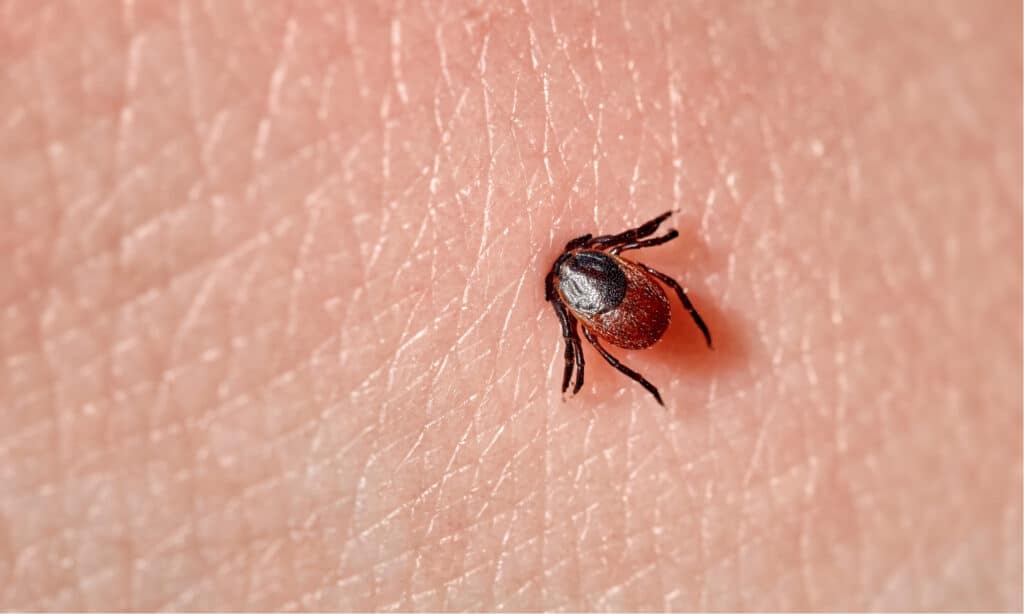
When ticks bite, they inevitably transfer some of their saliva into the host’s blood stream. This can lead to disease and pathogen transmission.
©Evgeniyqw/Shutterstock.com
Fortunately for Massachusetts residents, the only tick in Massachusetts known to transmit Lyme disease is the deer tick. Lyme disease is passed from tick to human via the tick’s saliva; it’s effects can be debilitating for sufferers.
How to Avoid Ticks in Massachusetts
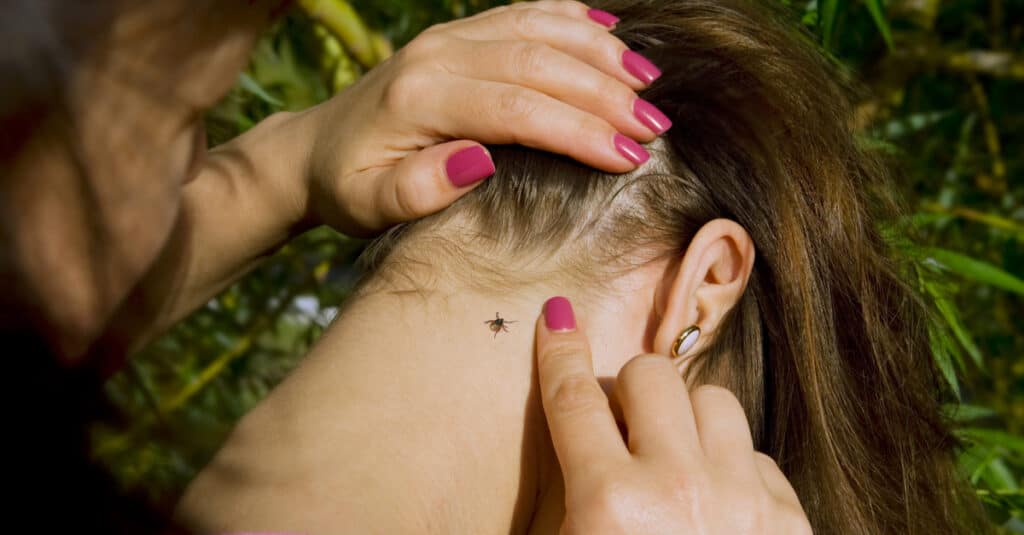
One of the keys to detecting ticks on your clothing is wearing light colors. Ticks are dark in color, and therefore easier to spot on light colored fabrics.
©Kalcutta/Shutterstock.com
If you’re planning on outdoor activities in Massachusetts during peak tick season, remember not to play in the forest leaf litter, or sit down in tall grass. Ticks like to hang out in these places. To further protect yourself, wear long pants and long sleeves—you can even tuck your pants into your socks and your shirt into your pants for added protection. Once you’ve completed your outdoor activity, be sure to check yourself thoroughly for ticks.
The photo featured at the top of this post is © Elliotte Rusty Harold/Shutterstock.com
Thank you for reading! Have some feedback for us? Contact the AZ Animals editorial team.






